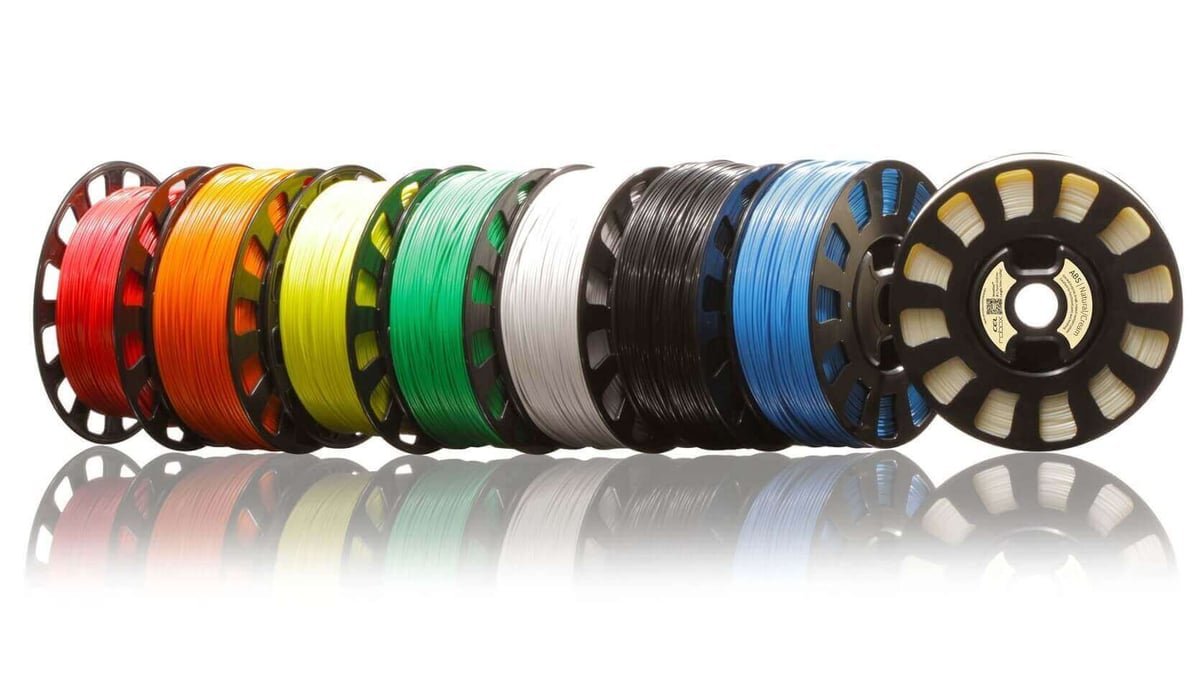New to the world of 3D printing? Never fear! We have some practical advice to share regarding the important topic of PLA/ABS filament.
So you’ve got yourself a 3D printer. Congratulations, there are exciting times ahead for you and your loved ones. But before you fire it up for the first time, there are some things you’ll want to know first. Consider this a short guide to help you get started; once you’ve grasped the basics, you’ll be able to get more done in less time.
For now, let’s get acquainted with filament, the material used to build your 3D printed objects. Five pieces of advice:
1. Research your filament

There are several sites on the web that are dedicated to testing consumer filaments. The RepRap Wiki on Printing Material Suppliers is a good place to start. Research will help you decide what type of filament works best for the type of project you plan on printing. Look for reviews with lots of details as well as photos. As a newbie, you’ll have better luck “seeing” what the reviewer writes about rather than trying to imagine it on your own. There are also multiple messageboards and forums where newbies and experienced alike can share their experiences, like the 3D Printing Subreddit.
2. Don’t buy too many filament spools at once
This is critical. Buying filament in bulk may help to economise, but you won’t know how well it’ll work with your brand of 3D printer until you’ve actually used it. If you’re unhappy with the results, you’re stuck offloading the remaining spools to someone else, probably at a loss to your wallet. Some shops offer test kits, featuring multiple varieties of filament, where you can test a small amount of filament for a fraction of the price.
3. Keep your filament material dry
As the handy video above explains, filament is a delicate substance. If it’s exposed to excess moisture, there’s a strong chance it will spoil. Try to avoid storing in damp, uninsulated places like a basement or a garden shed. Better yet, buy some vacuum bags with double zip tops, and store the excess filament inside. If you get the kind that’s fitted with a vacuum valve, you can suck out the air using a vacuum cleaner. For keeping your material dry, this method is foolproof.
4. Know where to buy the best filament
Not all filament are created equal! The differences in durability or cost can be quite extensive. Once you’ve read reviews and narrowed down your options, it’s time to decide where to purchase the filament you need for your 3d printing project. Keep cost and delivery time in mind before placing your order. Here are some renowned companies where you can buy filament directly:
5. Feeling adventurous? Make your own filament
For the brave (and the technically-minded), it’s also possible to build your home or desktop filament extruder. Raw resin pellets form filament when extruded. The white pellets mix with a colour masterbatch. It creates filament in the chosen colour. It’s important to know how much masterbatch to mix with the resin, however, as the ratio determines the strength of the colour. The blog, Bits Into Atoms, addresses ratios well. But it goes without saying, it’s probably more convenient just to buy filament from a store.
Now that you have a better idea of how filament works and the best way to buy, make, and store filament, you’ll be ready to use your new 3D printer in no time. When in doubt, read reviews, research books, and join a 3D printing community. Don’t be afraid to ask questions, and enjoy the process of discovery.
Image source: RepRap
License: The text of "Filament advice – 5 things to consider before you buy" by All3DP is licensed under a Creative Commons Attribution 4.0 International License.